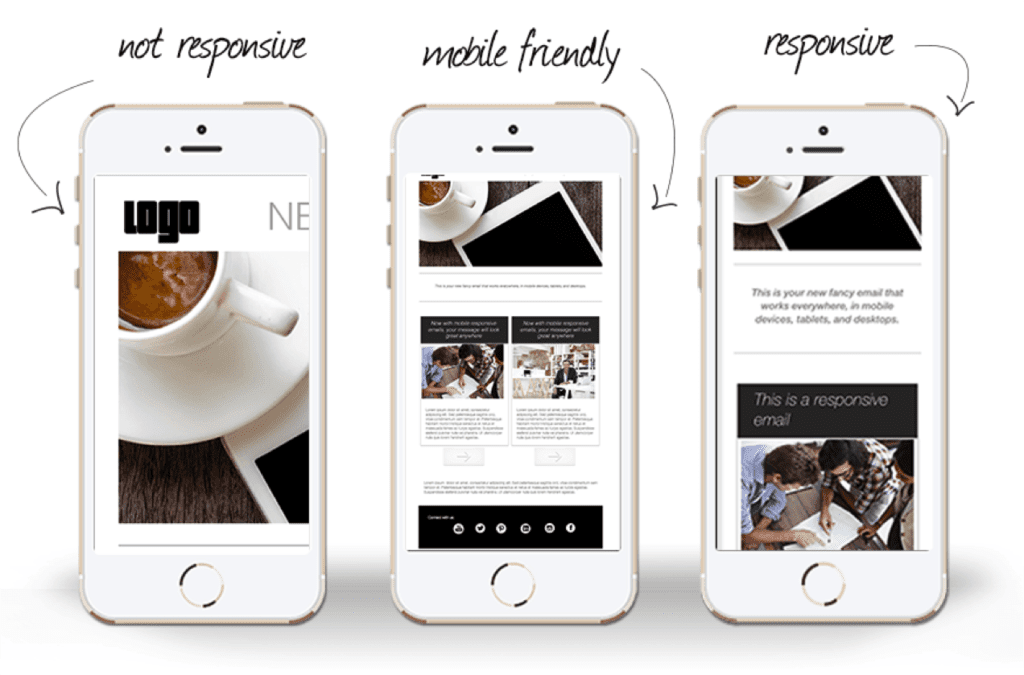7 industry experts share the downsides of email marketing
We reached out to seven digital marketers across different industries to find out where email marketing fell short for them and what you can do about it.

We reached out to seven digital marketers across different industries to find out where email marketing fell short for them and what you can do about it.

With 3.9 billion daily email users and a projected ROI of $38 for every $1 spent, there’s no denying that email is an effective marketing tool.
But unlike a few decades ago, email isn’t the only form of direct marketing.
This begs the question, how do you know if sending an email to your customers is the best way to reach them?
We asked seven digital marketing experts to share what they believe are the biggest disadvantages of email marketing as well as their tips for overcoming them.
CEO of SoftwarePundit Bruce Hogan learned the hard way during his time at Teachers Pay Teachers that high-volume email campaigns can run into some serious issues.
He sent over 500 million emails per year during his time managing TPT’s email marketing program. During one particular company-wide campaign, they attempted to send an email a few hours prior to the end of a sale to their entire audience of 5 million people.
What they didn’t realize, however, was that only a few hundred thousand of these emails could be delivered per hour. As a result, a large percentage of their customer base received the sale email after the sale had ended, which created a customer experience nightmare. Customers were confused and wrote to their customer support team requesting a discount.
The takeaway: Email doesn’t always work for high volume, time-sensitive campaigns.
The solution: For some time-sensitive offers, consider texting as an alternative to email marketing. Not only does SMS have a high throughput, but text messages are read in minutes compared to hours.
Due to the variety of devices that an email can be read on, email campaigns can be highly susceptible to size and design-related issues. As Co-Founder and Marketing Director at Cocodoc Alina Clark notes, the template one might use doesn’t always appear the way you designed it.
After having an email’s main infographic fall flat, Alina realized her biggest issue was not optimizing for a mobile view.
“Most people wouldn’t think of optimizing emailed images for image view, let alone infographics, and that’s where they fail.”
The takeaway: With 35% of emails opened on mobile devices, your campaigns need to look good on mobile devices too.
The solution: Test your emails on mobile before sending them and avoid copying and pasting text from a Word document into an email template. Microsoft Word is not HTML and most email templates are. These are very different formats and shouldn’t be mixed!

Matt Lally, Chief Curator of TheGiftYak, has helped scale some of the largest Silicon Valley startups through email marketing. One of the more recent challenges he’s optimized for is dark mode.
The new trend in browser and mobile aesthetic with Gen-Z is known as ‘dark mode’. While this setting is sleeker, helps reduce pesky strain on the eyes, and reduces battery usage, it also makes a marketer’s job more difficult.
Most marketing email templates aren’t built for dark mode, and as a result, your content isn’t appearing on mobile devices how you intended it to.
The takeaway: 91.8% of folks surveyed use some kind of dark mode on their phone, so marketers need to design custom dark mode email themes.
The solution: Have your tech team add “@media (prefers-color-scheme: dark)” query into the template. It will force browsers to use your dark mode version. This simple hack will increase your conversion rates.

In addition to the aforementioned formatting struggles, Alina Clark of Cocodoc brings up another barrier to email marketing success: the cost.
Email marketing is expensive to build and maintain. For Alina and her team, an efficient email marketing campaign has cost, at times, a few thousand dollars.
“We spend at least $5k per month on our emails alone” she notes. “You need to build an email list, invest in a good email automation system, and then write and design the emails.”
The takeaway: Proving there is a positive ROI and then pouring money into campaigns without any trackable analytics is not advisable.
The solution: Grow your contact list and collect phone numbers, email addresses, and social media handles, and give your subscribers a choice of their preferred contact method. That way, you won’t waste money trying to reach everyone across all channels.
Every time you send an email campaign to your list, you run the risk of being considered “spam” by your email service provider.
And if you send unengaging emails to subscribers who don’t care about your topic, then it’ll affect your deliverability. This in turn makes it harder to send engaging emails because fewer people will see it, which continues the cycle.
For e-commerce growth strategist Danavir Sarria, this is all too familiar. He recently sent an email campaign to a list he hadn’t contacted in months. It went straight to the promotions tab cutting his reach significantly.
Michael Humphreys, Founder and CEO of Z Grills Australia, also added the peril that comes with reaching out to cold leads. “The repeated sending of emails increases the chances of your emails being marked as spam. When this happens, your email IDs can even be suspended.”
The takeaway: Emails to cold leads don’t stand the best chance of getting through advanced spam filters.
The solution: You can use tools to determine your spam score and make sure to optimize your email content to maximize deliverability. David Bitton, Co-Founder and CMO of DoorLoop also encourages folks to continually test through seed email accounts, and clean email lists frequently to make sure that you only send to legitimate email addresses. This helps reduce bounce rates and increases your trustworthiness in the eyes of ISPs.

Another potential drawback with email marketing is that errors can spiral out of control. With mediums like blogging you have one centralized resource that can be updated after publishing.
As Vlad Rascanu of Build Media Group puts it, “With email, the toothpaste is out of the tube as soon as you hit send.”
Your messaging needs to be on point. Any error or miscommunication can be tricky to clean up, especially if subscribers start emailing you individually for clarification.
The takeaway: Companies need to take email marketing seriously rather than thinking they can slap marketing emails together and send them out in 15 minutes.
The solution: Invest in programs like Grammarly to copy-edit your emails before you send them, and be sure to send a test email to your team to ensure everything shows up how you want it across different devices.
Chris Laan, Founder of Designer Sheds, has struggled to form relationships with email recipients in the past.
“For all the talk about tailored experiences,” he notes, “email marketing actually has an upper limit when it comes to personalization. No matter how much you niche down your audience, you’ll always run into trouble eventually with giving readers information that doesn’t interest them.”
Writing individual marketing emails is obviously untenable the more your business scales, but at the same time, it becomes more important than ever to have those unique buyer personas so your marketing team knows who they’re writing to.
The takeaway: Standing out from the rest of the inbox, or the dreaded ‘promotional’ tab on Gmail, is a patently difficult part of email marketing.
The solution: Consider following up your email campaigns with more personalized, segmented messages via text marketing to your high-value customers.
Most of our experts are in agreement that if you focus on writing strong, customer-focused content intended to build relationships your email marketing will thrive.
Combine your email marketing with other channels and you’ll soar above the competition.
With a plethora of tools and programs at your disposal, the time to try out new communication platforms has never been better!
Meghan Tocci is a content strategist at SimpleTexting. When she’s not writing about SaaS, she’s trying to teach her puppy Lou how to code. So far, not so good.
More Posts from Meghan TocciLooking for a low-cost strategy to improve education? You can't beat text messaging, which impacts everything from preschool literacy to college enrollment.
ReadTake the guess work out of customer satisfaction surveys. Learn how to properly utilize this tool to get the most accurate customer feedback.
ReadStart a text marketing campaign or have a 1-on-1 conversation today. It's risk free. Sign up for a free 14-day trial today to see SimpleTexting in action.
No credit card required